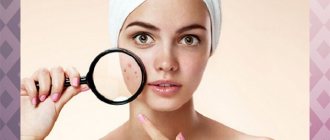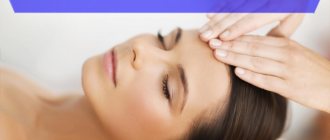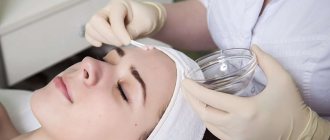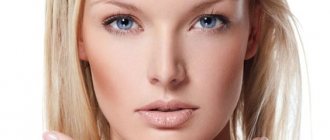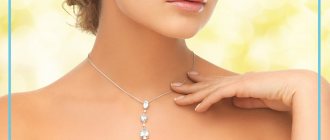Professional acid peels at home with Home-Peel (Jessner, Tsa)
After a short break, I continue to summarize the fall-winter skincare season, in which, of course, acids played a major role. And today it’s time to show peelings for home use Home-Peel
, namely,
Jessner peel and TCA
.
If you have been following me for a long time, you probably remember a series of posts about medium peelings from a cosmetologist (more details here, here, and here) in order to combat rashes, post-acne, and scars. Several years have passed since then, during which I was looking for an alternative to salon procedures, that is, products that would give the same effect, but when used at home. As it turned out, this is not so easy to do, because acids in high concentrations do not just sit on store shelves, but are sold in professional stores for cosmetologists. For example, in Poland, in order to buy a powerful peeling, you must present a cosmetologist’s diploma. And I’m even glad that this is exactly the case, because acids can both help and harm yourself. However, now, to my great joy, it is possible to do peelings at home, and all thanks to the Ukrainian brand Home-Peel
, which I discovered at the end of last year.
Home-Peel Jessner Peel pH 3.5
For myself, I immediately chose two peels that I had done before, I know the skin’s reaction to them, and the brand’s cosmetologist approved of my choice.
This is a three-component peeling consisting of resorcinol, salicylic and lactic acid. They have an excellent effect on problem skin, regulate the production of sebum and normalize the functioning of the sebaceous glands, while exfoliating the skin, evening out both tone and texture.
There are instructions for use on the packaging and in the box itself. I did everything as written, starting with 2 layers, gradually increasing to 4. These peels are really deep, they bake when used, the skin instantly turned red, and in some places frost even appeared (protein denaturation).
My redness lasted for another day after the procedure, then the skin tightened, and then gradually began to go away. In principle, this didn’t really bother me, but I had to limit myself when it came to makeup.
In total, I did 3 Jessner peels at intervals of 14-18 days. Then I switched to TCA.
Home-Peel TCA peeling 10% pH 2.5
After the skin went through the preparatory stage with the Jessner peel, we proceeded to TCA, which has a lower pH value, due to which it penetrates deeper into the skin. 1-2 layers were enough for me, I was afraid to apply more, and I didn’t want to constantly walk around with flaky skin.
I carried out three procedures, albeit at a slightly larger interval than the first peeling. In addition, when the peeling went away, I used lighter acid products and cream with retinoids. And everything overall gave, in my opinion, an excellent result. In the photo below you can see the skin at the beginning of autumn (left) and now (right).
The difference in tone and texture, the almost complete absence of post-acne spots and new rashes is obvious. And the lion's share of the credit for this belongs to Home-Peel peelings, although I do not deny the role of daily care.
Approximate price:
$22 for 10ml each
Overall: I am incredibly glad that there is a brand from which you can buy truly effective peelings, and not those “safe” acids that are available in pharmacies and cosmetic stores. On the other hand, acid peels are a serious thing, so if you are not sure about the reaction of your skin, have never tried peels before, then it is better, of course, to first consult a specialist so as not to cause yourself problems in the form of deep burns, damage to the mucous membranes and etc.
I also want to add a video in which I talk about all the products with acids that I used last winter:
What do you think about acid peels at home? Do you decide to do it yourself, or do you still prefer to see a cosmetologist?
ps 1: During the course of these peels, I didn’t take much photos of exfoliation, because the process always happens the same, and in the large opus about acid peels (links above) there are many detailed photos.
ps 2: As a neutralizer and restorative lotion, I used the corresponding products from set No. 7, which I previously wrote about.
Increase
Jessner Peel Composition
The classic Jessner peel contains equal parts of salicylic and lactic acids and alcohol-based resorcinol:
- lactic acid - 14%;
- salicylic acid - 14%;
- resorcinol - 14%.
This is exactly the set of ingredients that Dr. Max Jessner proposed for his colleagues. This happened in the middle of the last century, and already in 1993 the composition was supplemented and improved by the president of PCA skin, Margeret Ansira.
Modified versions of the exfoliant do not contain resorcinol, are less toxic and are less likely to cause allergies. Therefore, women with dark or sensitive skin can use them.
To obtain a stronger exfoliating effect, the concentration of lactic acid in some preparations can be increased to 20% versus the standard 14%. Ethanol is used as a solvent.
Properties of lactic acid
The substance is an integral part of the epithelium, and when it gets on its surface in small quantities, it creates an acidic environment. This helps suppress the proliferation of pathogenic microorganisms and helps get rid of acne. In addition, lactic acid, an alpha hydroxy acid, has a mild exfoliating and whitening effect on the skin, moisturizes and stimulates the production of elastin and collagen.
Properties of salicylic acid
Salicylic acid is considered an excellent antiseptic. It quickly and actively softens the top layer of skin, improves exfoliation, dries and accelerates tissue regeneration.
The component is highly soluble in oil, so it is used to reduce sebum secretion and fight acne. The substance cleanses oily skin, frees pores from contents and narrows them, dries out inflammation, and eliminates itching.
Action of resorcinol
In medicine, resorcinol is used as a disinfectant and tanning agent in the treatment of skin diseases. The component has a pronounced antimicrobial effect and enhances the work of acids.
Thanks to the antiseptic, skin inflammation and irritation rarely occurs after Jessner peeling. Chemical burns heal quickly and completely, leaving no scars.
Jessner Peel with Hydroquinone
Exfoliants with a similar component are modified products and have a pronounced brightening and smoothing effect. Hydroquinone is considered a good antioxidant, but if used in excess, it can trigger the growth of cancer cells. Doctors warn that if quinol is applied too often, the opposite effect is possible - the skin will acquire a grayish tint and become covered with spots.
In Russia and European countries, cosmetics containing hydroquinone are prohibited. In the USA, the substance is approved for use in a concentration of no more than 2%.
Products with hydroquinone are suitable for women with thick, dense skin. On thin and sensitive epithelium, drugs can cause severe irritation.
Types of Jessner peeling
In most cases, Jessner peeling is used as a superficial procedure, but can also be used for a more serious - medium - effect. To understand the difference between them, let's look at each option in more detail:
- Superficial exfoliation. One layer of the drug is applied to the skin. The procedure is performed to moisturize the epidermis, smooth out the relief and reduce pores, or as a preparatory measure for a deeper effect. After exfoliation, slight peeling is observed for 2–3 days.
- Median exfoliation. The skin is covered with two or more layers of solution. In this case, the drug penetrates the entire level of the epidermis without reaching the basement membrane. The recovery period takes 5–6 days with more severe peeling. The method copes with expression wrinkles, post-acne, scars and pigmentation.
Sometimes peeling is carried out in 4-5 stages and is called deep. It is performed only in exceptional cases, since the procedure is quite traumatic and produces a pronounced vascular reaction with the effect of surface coagulation. Skin treated with this method will heal for at least 2 weeks.
The optimal type of exfoliation is selected individually by the cosmetologist and depends on the type of defects and the patient’s skin.
Indications for use
Jessner's chemical peel can solve many problems. This is why the Hollywood version is so loved by cosmetologists and patients.
Indications for the procedure:
- expression and age wrinkles;
- dark spots;
- acne;
- photoaging;
- dry and dehydrated skin;
- dermatological diseases (hyperkeratosis, rosacea);
- post-acne, scars and cicatrices;
- stretch marks and stretch marks;
- preparation for other cosmetic procedures (plasty, deep exfoliation, mesotherapy).
Exfoliation with acids not only rejuvenates the skin, but also acts as an excellent prevention of aging.
Contraindications for the procedure
Chemical exfoliation, even the lightest and most non-aggressive one, is a serious cosmetic procedure that has its limitations, and you should be aware of them.
Contraindications for Jessner peel:
- individual intolerance to exfoliant components;
- inflammation and trauma to the skin (rashes, abrasions, scratches, cracks);
- exacerbation of herpes;
- pregnancy and lactation;
- infectious processes occurring with fever;
- oncology.
It is not recommended to carry out the procedure for demodicosis - peeling can provoke a relapse, and the patient will have to undergo treatment for a long time.
A temporary contraindication to acid exfoliation should be the season of the year - exfoliation should not be carried out during periods of high solar activity. The best time for the procedure is from October to March.
In case of serious diseases of the liver, kidneys or heart, only superficial peeling should be used. In this case, the limiting point is resorcinol. With each additional layer, its toxic effect on the body increases, which can adversely affect people with chronic pathologies.
Technique
Chemical exfoliation is a quick and, at first glance, simple manipulation, but it requires the cosmetologist to have a lot of experience and good knowledge of the procedure protocol with a certain composition.
Step-by-step implementation of the Jessner peel:
- The session begins with cleansing the skin with special products with a neutral pH. After a minute, the composition is washed off and the face is treated with alcohol.
- The exfoliant is shaken and quickly applied with a cotton swab, starting from the forehead to the chin.
- After the peeling composition, according to the protocol, Aglycolic cream, Retises Forte or another drug and sunscreen are applied to the skin. This concludes the procedure.
If it is necessary to cover the skin in several layers, this is done 2-3 minutes after each previous one.
Please note that exfoliant is usually not washed off from the face in a beauty salon. You will remove it at home 6 to 12 hours after the procedure.
And one more important point - you should not leave the salon with uncovered peeling, that is, the face after exfoliation should be treated with special preparations.
